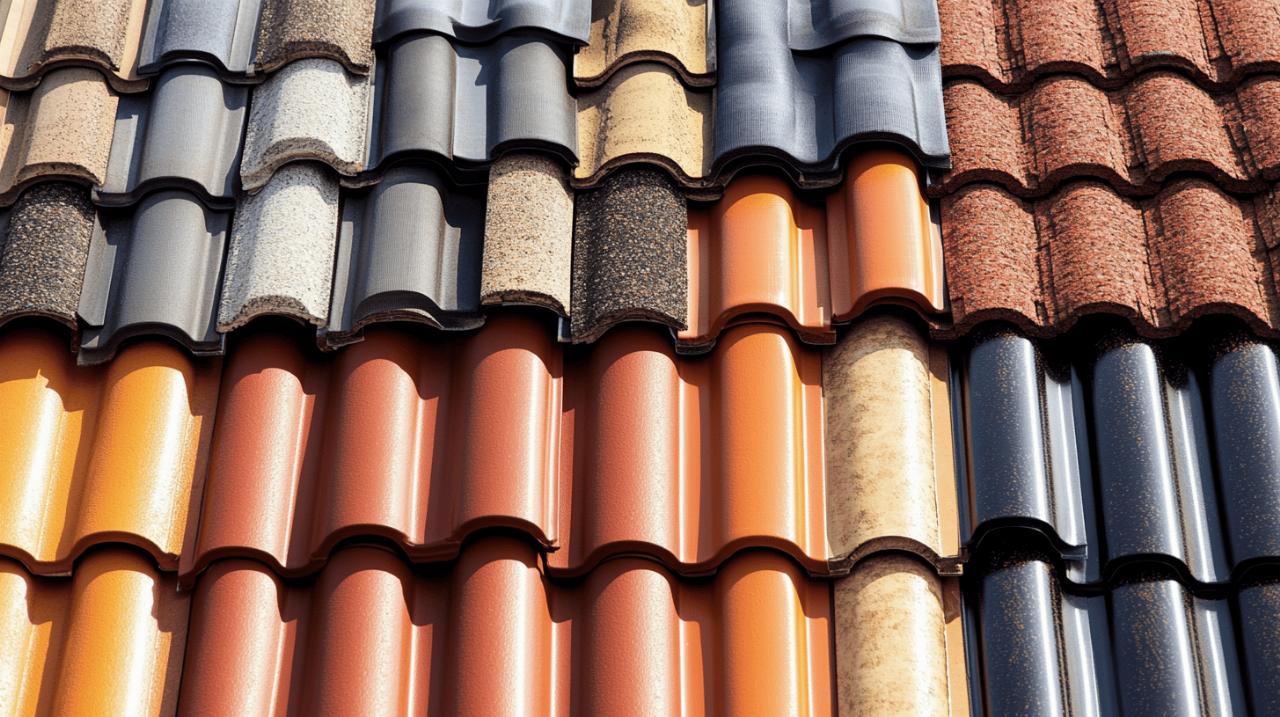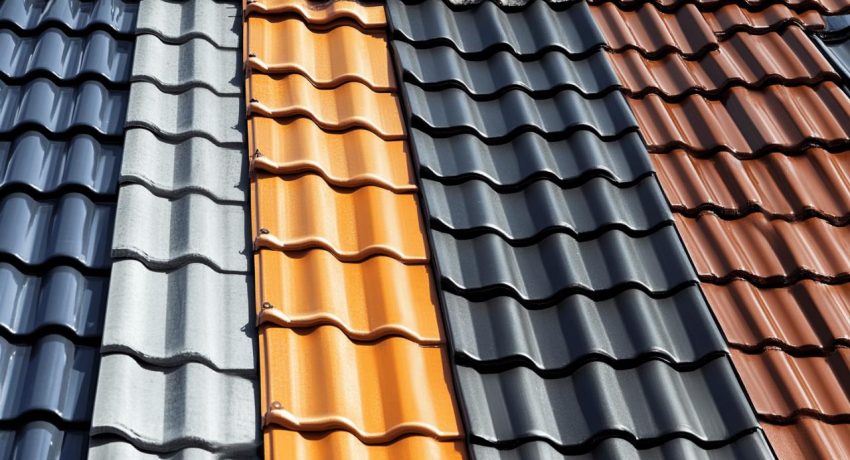Selecting the right roofing material for your home is a crucial decision that impacts not only your property's appearance but also its protection, energy efficiency, and long-term value. With numerous options available in today's market, homeowners face the challenge of navigating through various materials, each with distinct advantages and limitations. This comprehensive guide will help you make an informed choice that suits your specific needs, budget, and local conditions.
Assessing weather resistance for uk conditions
The British climate presents unique challenges for roofing materials. With approximately 156 rainy days annually across many regions, your roof must effectively manage consistent moisture. The materials you select need to withstand heavy rainfall without deteriorating or allowing water ingress. Traditional slate tiles have remained popular throughout the UK precisely because they excel in these wet conditions, with some installations lasting a century or more when properly maintained. Clay and concrete tiles also perform admirably, creating a watertight barrier that can last 100+ years with minimal issues even in the wettest areas of Devon and South West England. You can learn more about regional weather considerations at https://www.residencelapergolastintino.it/ where climate-specific building materials are frequently discussed.
Selecting materials that withstand heavy rainfall
Beyond slate and clay, metal roofing offers excellent performance in high-precipitation environments. Modern metal roofing systems create a virtually impenetrable barrier against moisture, with interlocking panels that prevent water penetration even during the heaviest downpours. These systems typically include built-in drainage channels that efficiently direct water away from vulnerable areas. For flat or low-pitched roofs, specialised materials like EPDM (a synthetic rubber membrane) provide superior waterproofing with a lifespan reaching up to 50 years, significantly outperforming traditional roofing felt which typically lasts 10-15 years in UK conditions.
Choosing options that can handle strong winds and temperature fluctuations
Coastal areas and exposed locations across the UK regularly experience strong winds that can damage less robust roofing materials. Metal roofing again demonstrates its versatility here, with wind resistance ratings significantly higher than asphalt shingles. Concrete tiles offer excellent stability in windy conditions due to their weight, though proper installation with appropriate fixings is essential. Temperature fluctuations between seasons require materials with good expansion and contraction properties. EPDM roofing maintains flexibility even during winter frost, while clay tiles naturally expand and contract without cracking through decades of seasonal changes. This adaptability explains why these materials remain favoured choices for UK homes facing variable weather patterns.
Budgeting for your roofing project
Understanding the financial implications of your roofing project requires looking beyond just material costs. While the average roof replacement costs approximately £8,000 (equivalent to about $10,000), this figure varies significantly based on material choice, property size, and structural requirements. Creating a comprehensive budget means accounting for removal of existing materials, potential structural reinforcements, installation labour, and ongoing maintenance requirements.
Understanding price ranges across different materials
Material costs represent the most variable aspect of roofing budgets. Asphalt shingles remain the most economical option at approximately £8,000 for a standard installation, offering a reasonable 25-year lifespan. Moving up the price scale, metal roofing averages around £13,000 but delivers approximately 80 years of service, representing excellent long-term value. Premium materials like slate command approximately £20,000 but offer exceptional durability, potentially lasting a century with proper maintenance. Speciality options like solar roofs represent the highest initial investment at around £22,000 but offset costs through energy generation. Green or living roofs average £18,000 and provide both environmental benefits and excellent insulation properties while lasting 30-50 years.
Setting realistic financial expectations for installation and maintenance
Labour costs typically constitute 40-60% of total roofing expenditure, varying based on material complexity and installation requirements. Slate and clay tiles demand specialised installation skills, potentially increasing labour costs compared to simpler materials like asphalt shingles. Maintenance expenses also differ dramatically – asphalt might require regular inspections and periodic repairs, while slate might need minimal attention for decades. When calculating the true cost of ownership, factor in these ongoing requirements. For example, metal roofing may command a premium initially but typically requires minimal maintenance beyond occasional inspections, potentially saving thousands over its lifespan compared to less durable alternatives requiring regular upkeep or earlier replacement.
Evaluating structural considerations
Your existing roof structure determines which materials are viable options without significant modifications. The weight-bearing capacity of your roof frame represents a crucial limiting factor when selecting materials. Standard timber roof structures designed for lightweight materials may require substantial reinforcement to support heavier options like slate, clay, or concrete tiles.
Determining if your roof can support heavier materials
A professional structural assessment from experienced roofing contractors like SPS Roofing Ltd provides essential information about your roof's current load-bearing capacity. Traditional slate tiles typically weigh between 70-100kg per square metre, while concrete tiles range from 50-80kg. These weights contrast dramatically with asphalt shingles at approximately 10-15kg per square metre or metal roofing at 15-30kg. The pitch of your roof also influences material suitability – steeper pitches effectively shed water and generally accommodate a wider range of materials, while shallow pitches below 20 degrees may require specialised systems like standing seam metal or single-ply membranes designed specifically for low-angle applications.
Identifying structural modifications that might be necessary
Converting from lightweight to heavy roofing materials often necessitates structural upgrades. This might involve installing additional rafters, reinforcing existing timbers, or adding support columns that transfer weight to load-bearing walls. These modifications increase project costs and complexity but enable the installation of premium, longer-lasting materials that might otherwise be unsuitable. Conversely, replacing heavy materials with lighter alternatives might allow simplification of the structure during renovation. Specialists from Crown Roofing can conduct thorough structural evaluations to determine specific requirements for your property, ensuring both safety compliance and optimal performance of your chosen roofing material.
Matching materials to your home's aesthetic
Your roof constitutes approximately 40% of your home's visible exterior, making it a defining element of your property's character and kerb appeal. The roofing material should complement architectural style, neighbourhood context, and personal preferences while maintaining functional performance.
Complementing traditional architectural styles
Period properties benefit from materials that honour their historical context. Victorian and Edwardian homes traditionally featured Welsh slate, which remains an authentic choice for restoration projects. For Tudor-style properties, handmade clay tiles with their subtle variations in colour create an appropriately aged appearance. Cottage-style homes often feature traditional plain clay tiles or stone slate depending on regional variations. Conservation areas and listed buildings frequently have specific requirements regarding roofing materials, with planning authorities typically favouring historically accurate options over modern alternatives regardless of performance advantages. Consulting local planning guidelines before material selection prevents costly mistakes and potential enforcement actions.
Enhancing modern home designs with appropriate roofing choices
Contemporary architecture offers greater flexibility in material selection. Standing seam metal roofing provides clean, minimal lines that complement modernist designs while offering excellent performance. Flat or low-pitched modern homes benefit from specialist systems like GRP (fibreglass) roofing that create seamless, waterproof surfaces. For eco-conscious modern designs, living roof systems covered with sedum or other vegetation create distinctive visual appeal while providing environmental benefits including improved insulation, reduced stormwater runoff, and enhanced biodiversity. These green roofs require specific structural support but deliver unique aesthetic and practical advantages for suitable contemporary designs.
Durability and warranty factors
Investment in quality roofing materials typically delivers superior long-term value through extended service life and reduced maintenance requirements. Understanding realistic lifespans and warranty limitations helps establish appropriate expectations and accurate lifetime cost projections.
Comparing longevity of different roofing options
Natural slate represents the gold standard for roofing longevity, with quality examples regularly exceeding 100 years of service. Clay tiles similarly offer exceptional durability, with many installations remaining functional after a century. High-quality metal roofing systems provide 60-80 years of protection, while concrete tiles typically deliver 50-60 years of service. Mid-range options include wood shingles and shakes, lasting approximately 25-30 years in favourable conditions but potentially less in damp UK environments. Asphalt shingles occupy the economy end of the durability spectrum, with premium varieties offering 25-30 years of service while standard products might require replacement after 15-20 years. Flat roofing materials show similar variation – EPDM rubber membranes can last 40-50 years, while traditional roofing felt might need replacement after just 10-15 years.
Analysing warranty terms and what they actually cover
Manufacturer warranties require careful scrutiny to understand their actual value. Material warranties typically cover manufacturing defects but not installation errors or normal weathering. The length of coverage often correlates with product quality – premium asphalt shingles might carry 30-year warranties while basic varieties offer just 15 years. Coverage terms frequently include prorated compensation that diminishes over time rather than providing full replacement value. Installation warranties from reputable contractors like SPS Roofing Ltd provide additional protection against workmanship defects, typically ranging from 5-10 years. Some premium roofing systems offer transferable warranties that enhance property value when selling, though transfer processes often involve registration requirements and potential fees.
Navigating planning regulations
Local authority regulations significantly impact roofing material choices, particularly in conservation areas, for listed buildings, or within areas of outstanding natural beauty. These regulations aim to preserve architectural heritage and visual cohesion within communities but can restrict material options.
Understanding local council restrictions
Standard planning regulations typically permit like-for-like replacements without formal applications, allowing homeowners to replace existing materials with identical or visually similar alternatives. However, material changes that alter appearance often require planning permission, particularly when visible from public areas. Some councils maintain approved lists of acceptable materials for specific neighbourhoods, limiting options to those deemed visually appropriate for the area. Roof colour often faces particular scrutiny, with many authorities requiring muted, traditional tones rather than contemporary bright finishes. Local councils may also impose restrictions based on environmental considerations, such as requiring sustainable sourcing for wood shingles or minimum recycled content for manufactured products.
Addressing conservation area and listed building requirements
Properties within conservation areas face stricter limitations, with planning authorities typically requiring materials that maintain area character and historical authenticity. Listed buildings face the most rigorous requirements, often necessitating exact material matches rather than modern equivalents. Grade II listings might permit sympathetic alternatives in some circumstances, while Grade I and II* listings typically demand authentic materials regardless of cost implications. Engaging with conservation officers early in the planning process helps identify acceptable options and necessary approval procedures. Some authorities offer limited grant funding for authentic restoration using traditional materials, potentially offsetting the premium costs associated with heritage roofing materials like handmade clay tiles or natural stone slate.
Energy efficiency considerations
Your roof significantly impacts your home's thermal performance, affecting both winter heating and summer cooling requirements. Thoughtful material selection and proper installation can substantially reduce energy consumption and associated costs while improving interior comfort.
Measuring insulation qualities of various materials
Modern roofing systems combine structural materials with insulation components to achieve thermal performance targets. Concrete and clay tiles offer moderate natural insulation value but perform best when combined with comprehensive underlayment systems. Metal roofing provides minimal inherent insulation but excels when paired with reflective underlayments that reduce heat transfer. Living roof systems deliver exceptional thermal performance, with soil and vegetation layers providing natural insulation that moderates temperature fluctuations. The insulation value of roofing systems is measured using U-values, with lower values indicating better thermal performance. Current building regulations specify maximum acceptable U-values for new construction and major renovations, typically requiring additional insulation beyond the roofing material itself.
Calculating potential energy savings over time
Energy-efficient roofing typically commands a premium but delivers ongoing savings throughout its lifespan. A well-insulated roof system can reduce heating costs by 20-30% compared to poorly insulated alternatives. Cool roofing technologies, including reflective membranes and light-coloured materials, reduce summer cooling requirements by minimising solar heat gain. While these technologies show greatest benefit in hotter climates, the increasing frequency of UK heatwaves makes them increasingly relevant for domestic properties. The payback period for premium insulation varies based on energy costs and local climate, but typically ranges from 5-10 years, after which savings continue throughout the roof's lifespan. Government incentives occasionally support energy-efficient roofing upgrades, potentially improving financial calculations further.
Maintenance requirements and costs
Different roofing materials demand varying levels of ongoing attention to maintain performance and appearance. Understanding these requirements helps homeowners select options aligned with their maintenance preferences and capabilities.
Comparing regular upkeep needs between materials
Slate and clay tiles typically require minimal regular maintenance beyond occasional inspections and clearing of debris from valleys and gutters. Individual damaged tiles can be replaced without disturbing surrounding areas, making repairs straightforward though somewhat specialised. Metal roofing similarly demands limited maintenance, primarily focusing on keeping surfaces clear of debris and checking fasteners periodically. Wood shingles and shakes require more frequent attention, including treatments to prevent moss growth and moisture damage in the UK's damp climate. Asphalt shingles benefit from periodic cleaning to remove algae and moss, which can degrade the material over time. Flat roofing systems demand the most vigilant maintenance, with regular inspections to identify and address potential issues before leaks develop. Green roofs require garden-type maintenance including weeding, occasional watering during drought periods, and monitoring for plant health.
Planning for long-term maintenance expenses
Budgeting for ongoing maintenance represents an essential aspect of total ownership cost calculations. Annual maintenance costs typically range from 1-4% of initial installation costs, varying significantly by material type. Premium materials like slate often command higher initial prices but incur minimal annual expenses, creating favourable lifetime cost profiles despite higher upfront investment. Lower-cost materials typically demand more frequent maintenance and earlier replacement, potentially resulting in higher lifetime costs despite lower initial expenditure. Professional maintenance services from specialists like SPS Roofing Ltd provide preventative care that extends material lifespan while identifying potential issues before they cause significant damage. Creating a dedicated maintenance fund based on realistic annual requirements ensures resources are available when needed, preventing deferred maintenance that typically leads to accelerated deterioration and premature replacement.
Working with professional roofers
Quality installation significantly impacts roofing performance regardless of material selection. Finding qualified specialists ensures proper installation, appropriate material selection, and reliable workmanship that maximises system longevity.
Finding qualified specialists for consultation
Reputable roofing contractors like SPS Roofing Ltd serving Devon and South West England provide valuable pre-project consultation. Look for specialists with specific experience installing your preferred materials, as techniques vary significantly between systems. Verify credentials including trade association memberships, insurance coverage, and manufacturer certifications that indicate specialised training. Personal recommendations from neighbours or local community groups often identify reliable contractors with proven performance records. Professional organisations like the National Federation of Roofing Contractors maintain directories of accredited specialists who meet established quality standards. Multiple consultations provide comparative information and highlight any significant differences in approach or recommendations that warrant further investigation.
Getting comprehensive assessments and material recommendations
Professional assessments should include thorough structural evaluation, moisture testing of existing materials, and detailed inspection of supporting elements including flashings, ventilation systems, and drainage components. Qualified contractors provide material recommendations based on your specific situation rather than promoting one-size-fits-all solutions. These recommendations should acknowledge budget constraints while identifying potential compromises and their implications. Comprehensive written quotations should detail material specifications, preparation work, installation procedures, and warranty terms. Requesting sample materials helps visualise finished appearance and assess quality before commitment. JJ Roofing Supplies offers extensive material options and can provide samples of various roofing products to help with this decision process. Their 35+ years of experience and £3 million stock value ensures availability of numerous options to compare.








